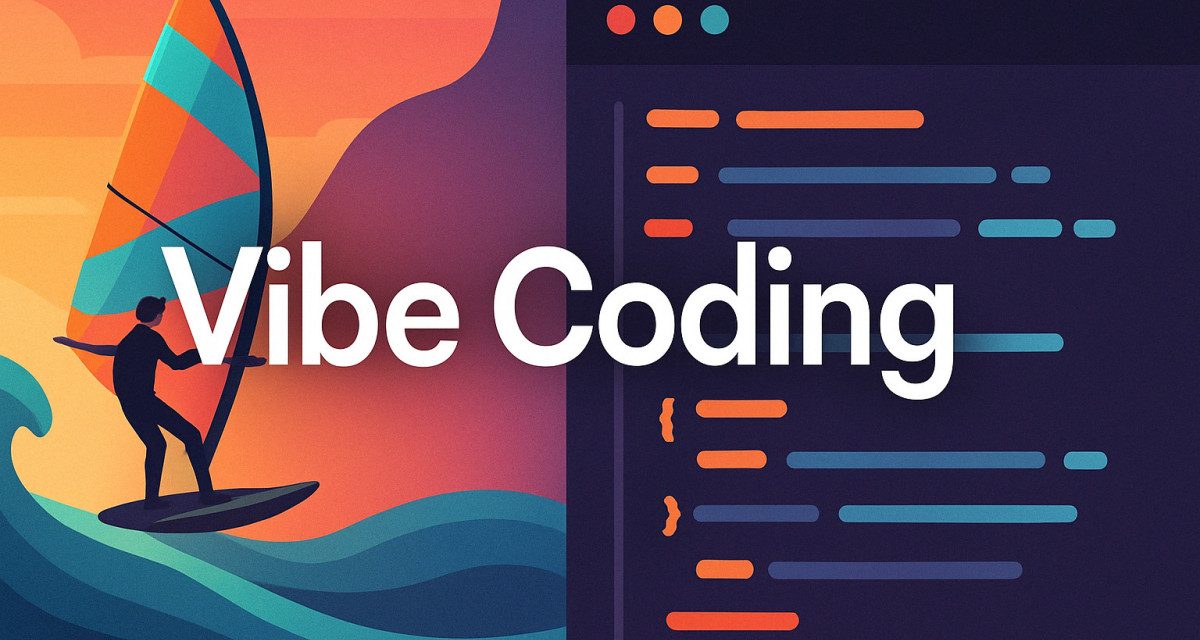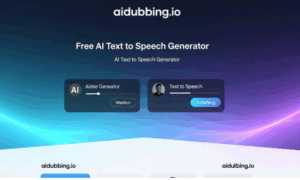AI-augmented senior developers are becoming extremely valuable – today, they deliver more output for less cost, to the clear benefit of software clients. When senior engineers from software development firms like Belitsoft audit AI-generated code from external projects, they often find skipping the architecture or neglecting security considerations that tends to backfire later. It might “work” initially, but significant rework or refactoring is needed to fix structural issues. Software architects seeing stories of folks vibe coding something, deploying it, and then watching it collapse as other folks flooded and hacked it. Quality attributes (security, maintainability, etc.) must not be an afterthought. When non-developers go ahead with AI-generated code without a solid plan, senior engineers must later step in to add the missing architecture or security layers. It’s far more efficient to do it right from the start.
Business Value
Adopting AI-assisted coding workflows (often dubbed “vibe coding”) reduces development time and cost for software projects, under the guidance of experienced engineers.
A single skilled developer using AI tools can deliver in hours what used to take months of traditional effort. For example, it is possible to build a full iOS app (with a database and AI features)—a project that would typically cost over $20,000 and take several months—much faster and at a significantly lower cost using AI support.
It’s shrinking MVP timelines and enabling businesses to validate ideas much faster.
Such efficiency gains translate directly to lower budgets and higher ROI: work that might have required a $100K investment can potentially be done for a small fraction of that cost, without sacrificing quality.
Code quality and security need not be compromised by speed. With senior engineers overseeing the AI-generated code, projects can maintain high standards.
AI coding tools are leveraged for boilerplate and repetitive tasks (generating a standard user login or basic UI form) that would have consumed dozens of developer hours in the past. Those tasks are now produced almost automatically, freeing developers to focus on higher-level design and refinement.
Work that might take days can be done in hours, as one practitioner notes, allowing more time for polishing architecture or addressing complex cases.
Because far fewer billable hours are needed overall, the total cost of ownership for the client plummets. Companies report significant cost savings (cutting a project’s effort from 1000 down to a few hundred hours) while still delivering secure, well-tested software on a shortened schedule.
In turn, clients see faster delivery and increased satisfaction with the end product, since they get a high-quality result for a much lower investment.
Instead of reducing headcount, organizations are redeploying their best engineers to multiply value. Tech executives observe that demand is shifting towards AI Engineers (experts at integrating AI into development) and predict this will be the highest-demand engineering job of the decade.
Right Methodology
The secret to achieving these results lies in a disciplined workflow and upfront planning.
Successful vibe coding isn’t a single magical prompt that generates an entire application – it’s a structured, senior-driven process.
The workflow typically begins by front-loading effort into a solid technical design – in other words, spending more time on architecture and detailed requirements before any code is written. This upfront investment pays off by making downstream AI prompts extremely precise, so the coding phase can run up to 10× faster.
Plan the architecture first
Always ensure you understand exactly what should be done and how it should be done before coding. Teams often create an explicit architecture specification (defining the system’s modules, data flows, interfaces, etc.) and share this document with the AI.
For example, one recommended approach is to have the AI generate an architecture.md file describing the full project structure, tech stack, and responsibilities of each component. By front-loading this design work, developers give the AI a clear “blueprint” to follow, greatly improving the relevance and quality of generated code.
Break tasks into small, specific prompts
Instead of asking for a whole application in one go, the process is iterative: the team splits development into modular tasks or features.
A senior engineer (or a specialized AI orchestration tool) will feed the AI one well-defined task at a time – for example, Implement the user authentication module following the given architecture.
Keeping prompts specific and to the point, and providing them with maximum context is very important. This might include specifying the programming language, frameworks, coding style, performance requirements, and security constraints up front.
By setting proper rules and instructions for the LLM to follow and tackling one thing at a time, the AI’s output becomes far more reliable.
Iterate with human oversight at each step
After the AI generates code for a module or task, senior developers review every line before accepting it.
The execution chain looks like: Architecture → Task prompt → LLM-generated code → Senior review → Git commit.
Engineers treat the AI like a junior pair-programmer whose work must be code-reviewed. Review everything before accepting anything, experienced AI developers advise.
If the AI’s code is flawed or off-track, the team corrects it (or adjusts the prompt) and reruns as needed.
This tight feedback loop ensures that even though the AI writes the initial code, the final codebase meets the team’s quality standards.
For example, there are reports of routine features (like a login flow, historically billed at 16–40 hours of work) being generated almost automatically by an LLM, with the senior dev only making minor tweaks before merging – a massive time savings in practice.
Embed security and environment setup into design
A common “gotcha” in naive AI-generated code is missing non-functional requirements such as security, scalability, or environment-specific configurations.
Top practitioners counter this by including those considerations in the initial specs and prompts.
Architectural blueprints are written in plain language for clients and cover aspects like support for multiple deployment environments (dev, staging, prod) and the inclusion of dedicated security layers for any third-party API integrations.
In some cases, the team will manually code especially sensitive integration points (authentication checks, encryption routines) to be absolutely sure they are hardened, rather than leaving it entirely to the AI.
During prompting, developers often specify security requirements explicitly – for example, telling the AI to use proper input validation, avoid hard-coded secrets, or follow OWASP security guidelines.
Clear instructions of this kind can yield surprisingly robust output from the AI.
By the time coding starts, the AI has a thorough roadmap, and the humans have thought through critical safeguards. This means the code it produces is far less likely to have gaps, and the overall build phase proceeds very quickly since the heavy thinking was done up front.
Following this methodology, teams report that the actual coding feels almost automated.
One detailed case study describes a process where the developer first generated an architecture document, then a task list of 10–25 steps, and finally let an “agentic” coding AI tackle each task one by one.
The developer intervened only to run tests and correct errors between tasks, acting as a careful supervisor rather than a coder typing every line.
Thanks to this preparation, even complex workflows can be completed in a fraction of the usual time.
Market Demand
AI-driven development techniques like vibe coding have moved from novelty to high-demand mainstream practice.
In early 2025, renowned AI researcher Andrej Karpathy playfully coined the term vibe coding to describe coding by fully giving in to the vibes – letting an AI handle the heavy lifting of writing code, thanks to the new generation of extremely powerful models. Since then, interest has exploded.
Within startups and tech-forward companies, AI-assisted coding is among the hottest areas for investment and demand. For example, in Y Combinator’s cohort, 25% of startups reported that 95% of their code was generated by LLMs, demonstrating how quickly founders are embracing these tools to maximize speed and output.
Venture funding has followed suit, pouring into AI coding assistants, as the industry recognizes the productivity gains. Analysts predict that 75% of enterprise software engineers will be using AI coding assistants in their work – a remarkable adoption curve that underscores how pervasive this trend is expected to become.
One reason for the popularity is that LLM capabilities have improved dramatically in a short time. Each new model brings better understanding of code and less mistakes.
Developers have seen the difference firsthand. For example, an engineer testing Anthropic’s Claude noted that an upgrade from the previous version to the latest has been a significant step up, previously getting 1.5× speedup, now solidly over 2×, with even higher boosts on well-defined tasks.
Karpathy himself remarked that this phenomenon of vibe coding is possible because the LLMs are getting too good at coding.
What this means is AI can reliably generate larger chunks of functional code than it could a year or two ago, making it viable to build out whole features or prototypes via prompting. As quality improves, more companies are willing to trust AI with core development tasks (under human supervision). Many organizations now treat AI not just as a toy, but as a serious development accelerator.
This has led to a new kind of service offering: AI code audits and rescue missions. A growing number of teams have tried to build systems via quick AI-generated code (often without enough planning), only to hit a wall when the project becomes buggy, insecure, or hard to scale.
They then call in experienced engineers to audit, clean up, and productionize these half-finished systems. Naive vibe-coded apps often lack proper error handling, security checks, or maintainable structure, and need substantial hardening before they’re ready for real users.
Senior engineers skilled in this domain are now in high demand to take these rough AI-drafted codebases and refactor them into robust production software.
In other words, after the initial frenzy, companies realize they skipped the architecture or DevOps steps, and they seek outside help to fix those omissions.
In the enterprise sector, adoption of vibe coding has been a bit slower and more cautious, but it is certainly picking up.
Large organizations typically have a lot of legacy code and strict compliance or reliability requirements, which makes them slower to trust AI-written code. Many enterprise developers also lack training in prompt engineering, so there’s a skills gap to overcome (legacy crutches like older tools and entrenched processes can hold them back).
Technically, current LLMs also struggle with deeply integrated enterprise scenarios – LLMs suck at making changes to a large codebase, one engineer observed from experience.
This limitation means big companies can’t yet feed their million-line critical application into LLM and get a safe update out.
However, even conservative organizations are starting to experiment by letting AI handle new, self-contained modules that can be developed from scratch.
For example, an enterprise might use vibe coding to quickly spin up a new microservice or an internal tool, where it can be built cleanly with AI guidance and doesn’t have to mesh with decades-old code.
We’re already seeing this shift – what one commentator called the beginning of a hot vibe code summer in big companies, where even enterprise execs are mandating LLM adoption for new projects.
The momentum is such that not adopting AI tools is seen as falling behind the curve in software development. As noted, analysts expect the majority of enterprise developers to be using AI assistants within a few years, indicating that even the slow-movers are convinced of the productivity and creativity benefits.
Risk Management
While AI coding tools are powerful, they are not a replacement for skill and engineering judgment.
The effectiveness of vibe coding varies dramatically based on who is using it and how they use it. Seasoned developers treat LLMs as helpful assistants – automating the drudgery while they remain firmly in control – whereas some less experienced users might over-rely on the AI and get into trouble.
It’s clear that effective vibe coding is a senior-level discipline. A large-scale code generation workflow can absolutely ruin a codebase if you are not a very experienced dev and tech lead.
In other words, LLMs in unskilled hands can produce incorrect or insecure code at lightning speed, potentially making things worse, not better. The AI will do exactly what you ask (literally), which means a poorly crafted prompt or a misunderstood requirement can lead to fragile or even dangerous code. Thus, human oversight and accountability remain very important – the engineer must guide the model, catch its mistakes, and enforce best practices at every step.
The difference between a senior AI engineer approach and a naive vibe coder approach has been likened to an orchestra conductor versus a busker.
Large language models deliver reliable value only when senior engineers stay in control.
Experienced staff design the system architecture, decide which AI components to call, and review every draft the model produces. They treat each AI suggestion as a starting point, adding the validation layers, security checks, and performance safeguards the model may omit.
Junior engineers who accept model output often ship code that works in a demo but fails in production. Common gaps include missing input validation around third-party APIs, weak error handling, and inconsistent coding standards. These oversights create security risks and future rework that senior engineers must later correct.
To avoid that cycle, experienced teams keep engineers in the loop. All code — AI-generated or not — passes a mandatory review before release. Prompt templates remind the model of architecture, security, and style requirements, so no critical detail is left to chance. The LLM is a tool, not an autonomous coder – accountability remains with the engineer signing off the change.
Companies that pair prompting with senior oversight see faster delivery without accumulating hidden technical debt. Those that allow unsupervised vibe coding face higher refactoring costs and greater operational risk.
Observed Outcomes and Developer Sentiment
The developers who have mastered this AI-augmented workflow report remarkable boosts in productivity – often far above anything seen with past tools – and many describe the experience in enthusiastic terms.
In routine coding segments (the kind of boilerplate or rote coding that normally might bore), productivity gains on the order of 5× to 10× have been noted. For example, if writing a certain script used to take an afternoon, with AI assistance it might be done in under an hour.
Experienced developers’ verdict is that they are completely convinced this is the future, this is a power user’s tool that enables a form of development previously unimaginable.
Such testimonials align with many others bubbling up in the developer community: when guided properly, AI coding is awesome – it lets programmers accomplish more in less time, automating the boring bits and even enlightening them with AI-suggested solutions they might not have thought of themselves.
When guided by seniors and anchored to a solid architecture, the AI yields excellent results — even if minor fixes are still required. With clear instructions and thorough testing, AI can produce clean, maintainable code that stands up in production. Conversely, if one were to take the AI’s output blindly, issues could slip through – but the teams seeing success simply don’t skip the review stage.
Developer sentiment toward vibe coding has evolved from skepticism to excitement as these positive outcomes become more common. Many who have adopted it speak of a renewed enthusiasm for coding – the AI handles the tedious parts, allowing them to concentrate on creative and complex aspects of software design. They liken the experience to having an expert pair programmer on call at all times. Some even talk about how it’s changing the nature of their job: instead of grinding out boilerplate, they are elevated to a higher-level role, focusing on architecture, refining requirements, and orchestrating the collaboration between multiple AI agents. Initial fears that AI coding means low-quality code are being replaced by recognition that with the right process it means high-quality code delivered faster. As a result, many developers are keen to integrate these tools more deeply.
To be fair, the community still acknowledges some challenges – for example, AI can hallucinate at times or make errors if given a vague prompt, and using advanced AI models can incur significant API costs. But these are seen as manageable issues (better prompts and hybrid approaches are continually reducing hallucinations, and the cost is justified by the value delivered).





























